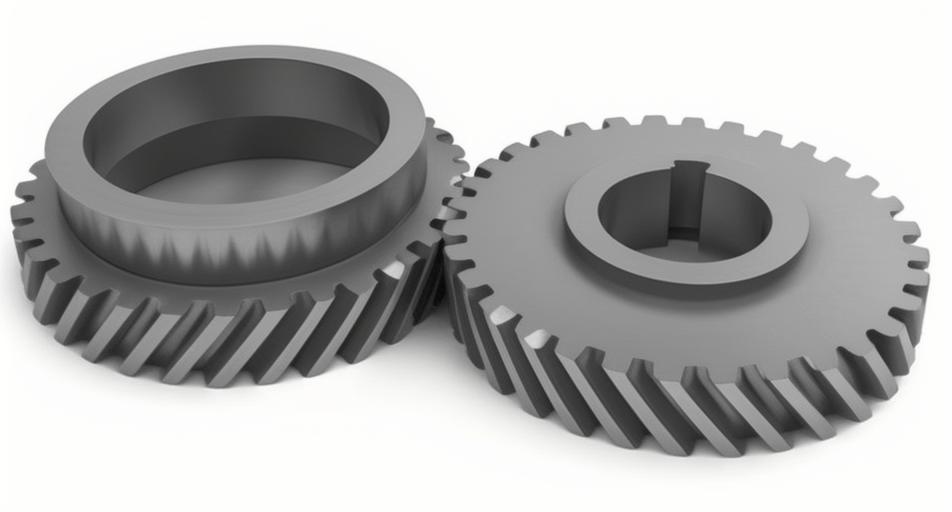
Advanced Lubrication Techniques
- Synthetic Lubricants
- Description: Synthetic oils and greases are engineered to offer superior performance over conventional mineral-based lubricants.
- Advantages:
- Enhanced thermal stability and oxidation resistance.
- Improved wear protection and extended service intervals.
- Better performance in extreme temperatures.
- Applications: Widely used in high-load, high-speed, and high-temperature applications such as automotive transmissions and industrial gearboxes.
- Nano-Lubricants
- Description: Incorporation of nanoparticles into lubricants to enhance their properties.
- Advantages:
- Reduced friction and wear due to the unique properties of nanoparticles.
- Enhanced load-carrying capacity and anti-wear characteristics.
- Improved thermal conductivity for better heat dissipation.
- Applications: Emerging in high-performance and precision applications, including aerospace and robotics.
- Solid Lubricants
- Description: Use of solid materials such as graphite, molybdenum disulfide (MoS2), and polytetrafluoroethylene (PTFE) as lubricants.
- Advantages:
- Effective in extreme conditions where liquid lubricants fail, such as high temperatures or vacuum environments.
- Long-lasting lubrication with minimal maintenance.
- Applications: Ideal for space applications, high-temperature industrial processes, and sealed or hard-to-reach gear systems.
- Biodegradable Lubricants
- Description: Environmentally friendly lubricants derived from renewable resources.
- Advantages:
- Reduced environmental impact and improved sustainability.
- Comparable performance to synthetic lubricants in many applications.
- Applications: Suitable for industries with environmental regulations, such as marine, agriculture, and forestry.
Innovative Lubrication Delivery Systems
- Automatic Lubrication Systems
- Description: Systems that automatically dispense the right amount of lubricant at regular intervals.
- Advantages:
- Ensures consistent lubrication, reducing wear and extending helical gear life.
- Minimizes human error and reduces maintenance downtime.
- Applications: Common in large industrial machinery, conveyor systems, and wind turbines.
- Micro-Dosing Systems
- Description: Precisely controlled systems that deliver very small amounts of lubricant directly to helical gear contact points.
- Advantages:
- Reduces lubricant consumption and waste.
- Provides targeted lubrication, improving efficiency and reducing friction.
- Applications: Ideal for precision machinery, robotics, and applications requiring minimal lubrication.
- Dry Film Lubrication
- Description: Application of a solid lubricant film on helical gear surfaces, often through coatings or sprays.
- Advantages:
- Reduces the need for regular lubrication maintenance.
- Effective in harsh environments where traditional lubricants might degrade.
- Applications: Suitable for aerospace, military, and high-temperature industrial processes.
Advanced Maintenance Practices
- Condition Monitoring
- Description: Use of sensors and monitoring systems to continuously assess the condition of helical gear and lubricants.
- Techniques:
- Vibration Analysis: Detects abnormalities in helical gear operation, indicating wear or damage.
- Oil Analysis: Monitors the condition of the lubricant, identifying contaminants and degradation.
- Advantages:
- Early detection of issues, preventing unexpected failures and costly downtime.
- Optimizes maintenance schedules based on actual condition rather than fixed intervals.
- Applications: Widely used in critical applications such as power generation, manufacturing, and transportation.
- Predictive Maintenance
- Description: Uses data from condition monitoring to predict when maintenance should be performed.
- Advantages:
- Maximizes helical gear life and minimizes unplanned downtime.
- Reduces maintenance costs by preventing over-maintenance and addressing issues before they lead to failures.
- Applications: Employed in industries with high operational costs and critical uptime requirements, such as aerospace, automotive, and heavy machinery.
- Digital Twin Technology
- Description: Creating a digital replica of helical gear system to simulate and analyze its performance in real-time.
- Advantages:
- Enables detailed analysis and optimization of helical gear performance and maintenance strategies.
- Facilitates predictive maintenance by identifying potential issues through simulations.
- Applications: Increasingly used in complex and high-value systems such as aerospace, industrial automation, and smart manufacturing.
- Remote Monitoring and IoT Integration
- Description: Integrating helical gear systems with Internet of Things (IoT) devices for remote monitoring and control.
- Advantages:
- Provides real-time data on helical gear performance and lubricant conditions.
- Enables remote diagnostics and maintenance, reducing the need for on-site inspections.
- Applications: Useful in geographically dispersed or hard-to-reach installations, such as wind farms, offshore platforms, and automated manufacturing lines.
Conclusion
Innovations in lubrication and maintenance practices for helical gear focus on enhancing efficiency, reliability, and sustainability. Advanced lubricants like synthetic, nano, and biodegradable lubricants offer superior performance, while innovative delivery systems ensure precise and consistent lubrication. Modern maintenance practices, including condition monitoring, predictive maintenance, and digital twin technology, help in early detection and prevention of helical gear failures, optimizing gear lifespan and reducing downtime. These advancements are crucial for industries where performance and reliability are paramount, such as aerospace, automotive, and industrial machinery.
